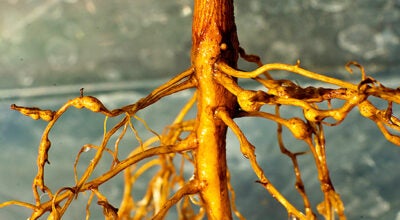Hunters need hunter’s education certification
Published 10:45 pm Wednesday, September 9, 2015
The News staff reports
With hunting season here, it’s time to get your hunter education certification.
To hunt legally in Texas, anyone born on or after Sept. 2, 1971, must complete a hunter education training course or purchase a one-time ‘deferral’, good for one license year. Because the minimum age of certification is 9 years old, hunters under the age of 9 must be accompanied by a licensed hunter in the field.
Hunters ages 9 through 16 must either complete hunter education courses or be accompanied while in the field.
Deferral purchasers must also be ‘accompanied’ which means to be within normal voice control of a licensed hunter 17 years of age or older who has completed hunter education or who was born before Sept. 2, 1971. Hunters 17 and up must complete hunter education courses.
To make this process easier than ever, the Texas Parks and Wildlife Department (TPWD) now offers the option of completing training courses completely online for Texas residents 17 years and older.
However, TPWD also offers three other convenient methods of getting certified: the basic, enhanced and advanced courses, which involve classroom and/or field time.
The basic hunter education course is designed for novice and young hunters ages 9 and above and requires six hours of classroom instruction. The enhanced hunter education course is a combination of an online home study program and up to five hours of field training.
The advanced hunter education course requires more than six hours of instruction and includes more content than the basic and enhanced courses.
Each of the courses costs $15, and the passing grade for all courses is 75 percent.
The certification is valid for life and is honored in all other states and provinces.
•
Booming populations of largemouth bass and alligator gar give anglers two good reasons to fish Falcon Reservoir.
Above average rainfall in spring 2014 and 2015 following very low water levels for several years prior is sparking a resurgence of the bass population, said Texas Parks and Wildlife Department (TPWD) Inland Fisheries biologist Randy Myers.
“The low water allowed for jungle-like growth of huisache, mesquite, acacia and retama on the exposed reservoir bottom,” he said. “The water level increase inundated that terrestrial growth, resulting in the formation of strong year classes of bass.”
TPWD annually stocks Falcon with around half a million Florida largemouth bass to enhance the production of large fish. Stocking plus strong natural spawns in 2004 and 2005 following the last water level rise led to a boom that lasted from 2008 until 2011.
Myers said 8- to 14-inch bass are currently very abundant in Falcon, and those fish will grow rapidly over the next several years. Myers expects Falcon’s largemouth bass population to peak again in 2017-19.
“Now is the time to do your homework on Falcon and learn where and how to fish it,” he said. “Falcon is a big reservoir, more than 80,000 acres when full and it pays to have a game plan in place before you go fishing.”
While you are looking for the best places to fish for bass, Myers suggests that you try your luck with alligator gar as well. The Texas Parks and Wildlife Commission raised the limit on alligator gar on Falcon to five fish per day and 10 in possession effective September 1.
The alligator gar population in Falcon is doing well and based upon scientific data is able to sustain itself with the increased bag limit. Female alligator gar in Falcon are attaining 100 pounds in 7-10 years and the lake record weighing 249 pounds was taken in 2014. While having a 10-pound bass on the end of your line is exciting, battling a gar that could be 100 pounds or bigger can give you quite a thrill and make for some very special memories and photographs.
Since you can target alligator gar using different means of take it is important to know that harvested gar can make for some fine table fare.
“Anglers pursue gar with archery equipment, rod and reel and jug lines on Falcon, and the meat is white, non-oily and not fishy tasting,” Myers said.
“It’s quite popular with locals, who call it catan.”





